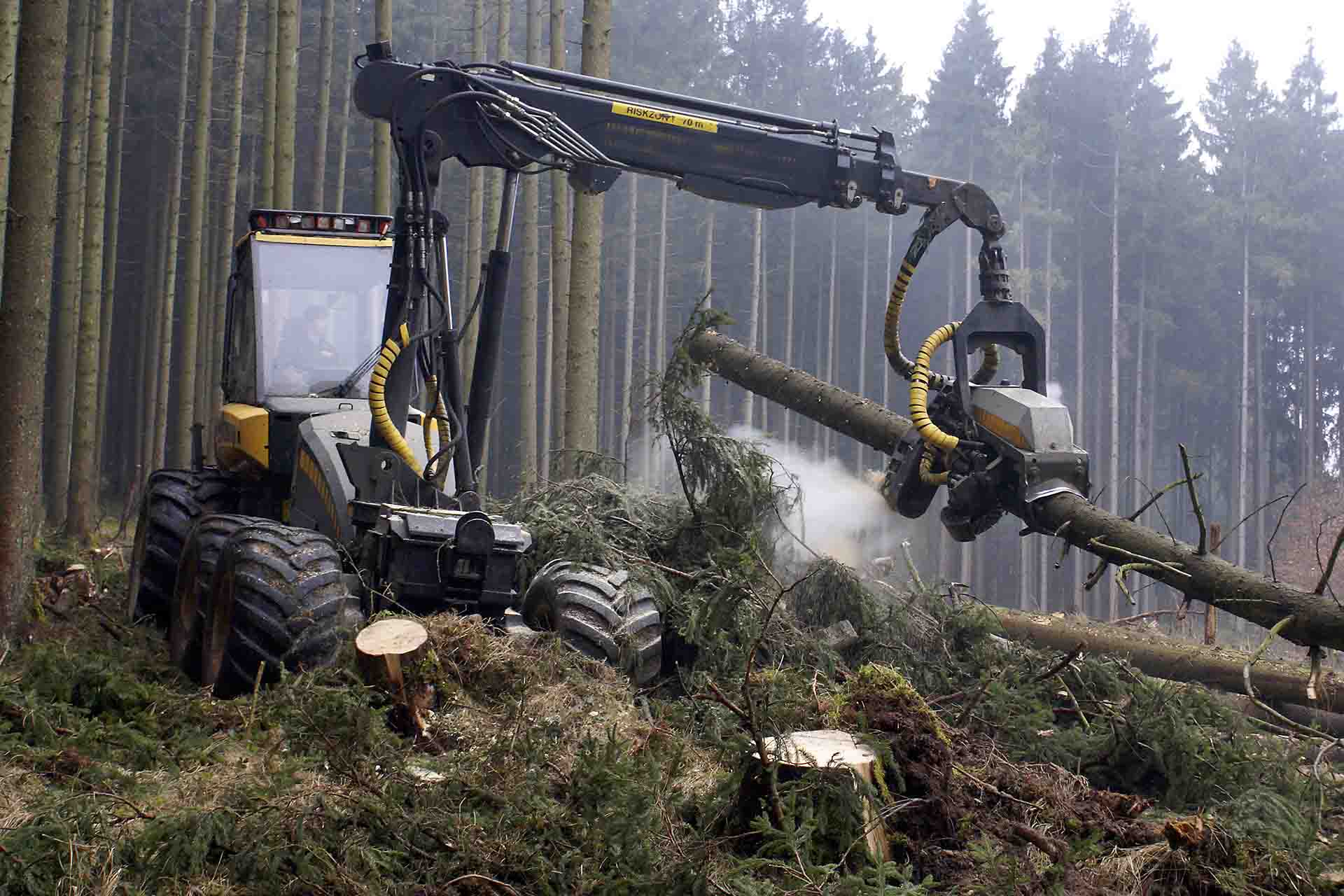 The forestry business is a long-term and planned business, but it is not immune to external pressures that can sometimes cause rapid change. That’s why business needs to be flexible and adaptable to remain competitive and profitable. In this blog post, we have picked out some of the current topics that create external pressures on forest business, and where the combination of efficient process and information management shows its strengths.
The forestry business is a long-term and planned business, but it is not immune to external pressures that can sometimes cause rapid change. That’s why business needs to be flexible and adaptable to remain competitive and profitable. In this blog post, we have picked out some of the current topics that create external pressures on forest business, and where the combination of efficient process and information management shows its strengths.
Some of the pressures on forest service companies are related to market conditions, competitiveness factors, and customers, while others are related to regulatory requirements and other formal obligations. What all these factors have in common is that those who can best cope with the pressures are those who turn threats into opportunities and look at their own operations with fresh eyes – ready to develop and streamline both their processes and the information management associated with them.
Business and information flow requirements in the forest services field are currently increasing, for example:
Rising raw material and energy prices
Rising prices are currently affecting businesses across a wide range of industries. In forest service companies, this puts particular pressure on them to be resource efficient and, for example, to manage logistics as streamlined as possible. This has of course been an important consideration in the past, but the benefits of a planned approach become more pronounced as prices soar.
Wood-based fuels are also the most important source of bioenergy in Finland, so optimal matching of supply and demand is an important part of customer-oriented service. It is therefore an advantage for the company to be able to predict raw material availability, volumes, and delivery times.
An efficient information system provides a solid basis for resource-efficient work and transport, as well as for all the foresight related to raw materials.
The market situation and customer requirements
Finland is a forest-rich nation, and the timber trade takes place at both individual and corporate levels. As in any other industry, forest service companies are also fundamentally affected by the competitive situation.
To compete, a forest service company must be able to meet the demands and habits of its customers. A solid base is built on fundamentals such as volume, quality, price, and delivery time in line with customer demand, but it also needs to be able to differentiate itself from other companies offering similar raw materials and services.
A significant competitive advantage can be achieved, for example, through superior service, where information management and communication play an important role. In order to be able to plan their own operations, customers want to know in advance, in a dependable way, the quantities, volumes and delivery schedules of timber batches, among other things. Since many forest service companies are also surrounded by a network of partners, better customer service also comes from an easy, reliable and up-to-date flow of information throughout the company’s ecosystem – from transport contractors to accountants and everything in between.
Sustainability and traceability
It is important for forest service companies to know and reliably manage the movements of their wood source and delivery lots. Accurate information on the origin of timber gives companies an advantage in an increasingly environmentally conscious market, and for many forest business operators it is also a prerequisite for trading.
In the case of energy wood, tracking the origin of the wood is also important because full electricity production subsidies require tracking the origin of the wood in accordance with forest certification standards. Once the origin and certification data of the wood is included in the company’s information system, it can be easily used for the procurement and supply of energy wood to power plants.
In a nutshell: when the origin of the wood is tracked using an information system, every movement of the wood is recorded in the system. In this way, the flow of products can be tracked along the entire chain, from forest to transport and on to the customer. The flow can also be traced back to the original growing site any time.
Statutory requirements, taxation, and subsidy applications
With an effective information system, documents related to wood procurement are easily generated, and mandatory official documents, such as the forest use declaration, can be handled electronically, directly from the system. A good addition is if the necessary documents can be printed directly from the system in more than one language.
Modern information system solutions also make it possible to use the Metsään.fi service to automate the conversion of harvesting area data and bids into contracts for timber sales. When choosing a system, you should make sure that it also allows for different transaction types, customer-specific price lists, as well as splitting orders, real-time monitoring and reporting – also for inventory.
Profitability is always topical
Regardless of the fluctuations in external pressures, one thing is always on the top of the minds of forest service companies: business profitability. With a good information system, a forest service company can always keep up to date with its profitability situation, including by species or even at the level of individual delivery lots. This enables the management of activities in a planned way and a step-by-step improvement of profitability.
Pinja’s solution for efficient information management in the forest services field is the modular ERP system Forest by Pinja. Our system enables fully electronic timber trade, real-time harvesting and transport logistics, and real-time monitoring of costs, volumes and yields of the delivered timber. Developed to manage wood procurement, harvesting and logistics, Forest by Pinja offers many functions that facilitate everyday routines and includes both maps and the tracking of origin of the wood.
Read more:
Guide: Improving profitability of energy wood trading – digital solutions for more efficient supply chain management
Efficient information management in the energy wood supply chain answers core business questions
A holistic view of the business underpins FM Timber’s steady growth

Veli-Pekka Hämäläinen
I lead the customer management team at Pinja’s Forest unit, which is responsible for the delivery of forestry, sawmill and wood processing systems to our Finnish and international clients. My main task as a team leader is to ensure the best possible service for Pinja’s clients. In my free time I enjoy culture and good food with family and friends, and in the summer I go fishing in the inland waters of Northern Finland.
Back to the Pinja Blog
Categories
- Pinja Career (70)
- Production development (43)
- Software development (43)
- Business Intelligence (42)
- Sustainability (31)
- Digital business (30)
- Circular economy and natural resources (27)
- Ecommerce (23)
- Supply chain management (23)
- ICT services (22)
- Maintenance development (22)
- Digital society (20)
- Industrial digitalization (20)
- ERP (18)
- Forest industry ERP (14)
- Industrial innovation (11)
- Health and welfare technology (9)
- Artificial intelligence and machine learning (7)
- Lean (4)
- eudr (1)